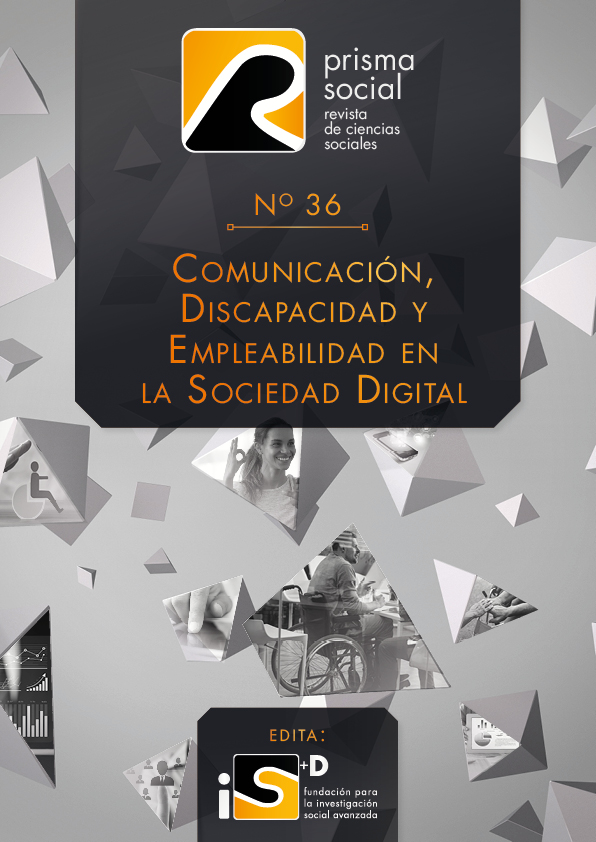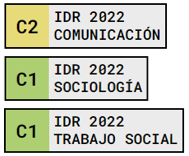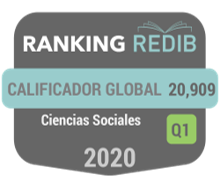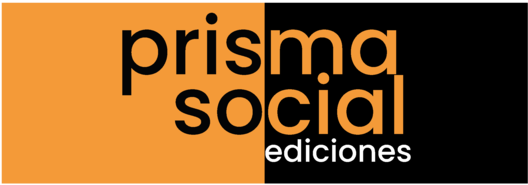La música en eventos experienciales accesibles para personas sordas
Evidencias a partir del caso Young Music Fest 2019
Palabras clave:
Neuromarketing; música; emociones; diversidad comunicativa; sordos; discapacidadResumen
Diseñar intervenciones sociales con impacto en la calidad de vida de ciertos colectivos es uno de los logros de “Young Music Fest”, un festival de música español accesible a personas con discapacidad auditiva, y constituyen una eficaz estrategia para la creación de experiencias; ya que la música evoca, de forma directa, emociones. Con el propósito de la integración de diferentes colectivos, los festivales contribuyen a que las comunidades unan sus fuerzas, dan lugar a un mayor sentido de pertenencia y propician la accesibilidad y diversidad. Al aprovechar la creatividad, los certámenes musicales generan vínculos entre residentes, evocan su identidad, actúan como palancas de marketing social y promueven indicadores clave de calidad de vida; que brindan un lugar de encuentro para integrantes de la comunidad y fomentan su participación. En este trabajo se describe una investigación triangular, compuesta por un test de asociación implícita, un cuestionario y un grupo focal, aprovechando la sinergia de la investigación neurocientífica –psicométrica, cuantitativa y cualitativa–, como aproximación a un proyecto real que aporta nuevas soluciones sobre cómo afrontar la crisis de la covid-19 en el ámbito de los eventos presenciales.
Descargas
Citas
Andreasen, A. (2002). Marketing Social: Marketing in the Social Change Marketplace. Journal of Public Policy and Marketing, 21(1), 3-13. https://doi.org/10.1509/jppm.21.1.3.17602
Altozano, J. (2019). ¿Qué emociones producen las 7 escalas modales? [Vídeo] Youtube https://bit.ly/34BXETb|
Ayinde, B. (2019a). Embracing disability inclusion in Africa. https://bit.ly/3thBS0X
Ayinde, B. (2019b). Naked and not ashamed: 30 days journal. Philippians Four Thirteen Foundation, Lagos, Nigeria.
Benevenuti, J., Nunes de Barros, L., de Sousa, L., Soares, R., Gambirásio, Y., Malta de Souza, D., Nascimento, A. & Magalhães, E. (2021). Effect of the Finnish Tube on the Voice of a Deaf Musician: A Case Report, Journal of Voice, Volume 35, Issue 3, 498.e23-498.e29. https://doi.org/10.1016/j.jvoice.2019.09.019
Berbell, M. A. (2016). El sonido y su influencia en la mente del consumidor. [Trabajo fin de Grado, Universidad de Zaragoza] Repositorio de la Universidad de Zaragoza https://bit.ly/3t78afb
Bhavana, K., Shamshad, S.; & Kumar, C. (2021). An evaluation of music perception, appreciation, and overall music enjoyment in prelingual pediatric cochlear implant users utilizing simplified techniques: An Indian study, International Journal of Pediatric Otorhinolaryngology, Volume 150, 110898. https://doi.org/10.1016/j.ijporl.2021.110898
Brennan, L., Fry, M-L. & Previte, J. (2015). Strengthening social marketing research: Harnessing “insight” through ethnography, Australasian Marketing Journal (AMJ). Volume 23, Issue 4, 286-293. https://doi.org/10.1016/j.ausmj.2015.10.003
Calgaro, E., Craig, N., Craig, L., Dominey-Howes, D. & Allen, J. (2021). Silent no more: Identifying and breaking through the barriers that d/Deaf people face in responding to hazards and disasters, International Journal of Disaster Risk Reduction, 57, 102156, https://doi.org/10.1016/j.ijdrr.2021.102156
Cochran, A.L. (2020). Impacts of COVID-19 on access to transportation for people with disabilities, Transportation Research Interdisciplinary Perspectives, 8, 100263, https://doi.org/10.1016/j.trip.2020.100263
Cruz-Morato, M.A. & García-Lizana, A. (2011). La economía y la psicología ante el problema de la inactividad de las personas con discapacidad. Revista de Fomento Social, 262(66):251–284. https://doi.org/10.32418/rfs.2011.262.1870
Cruz-Morato, M.A., García-Lizana, A., & García-Mestanza, J. (2017a) El problema de la exclusión social en la Unión Europea: ¿Puede el Marketing Social resolver la situación? Una perspectiva desde la Economía del Comportamiento, Revista de Gestão dos Países de Língua Portuguesa, Special Issue “New Dimensions in Social Marketing”, 16 (3):28–43. https://doi.org/10.12660/rgplp.v16n3.2017.78374
Cruz-Morato, M.A., García-Lizana, A., & García-Mestanza, J. (2017b) El Impacto de la Exclusión Social sobre el Crecimiento Económico en la Unión Europea. Revista de Economía Mundial, 45:43–64.
Deane-Drummond, C. (2017). Empathy and the evolution of compassion: from deep history to infused virtue. Zygon, 52(1):258–278.https://doi.org/10.1111/zygo.12317
Dicianno, B.E., Sivakanthan, S., Sundaram, A., Satpute, S., Kulich, H., Powers, E., Deepak, N., Russell, R.& Cooper, R. (2021). Systematic review: Automated vehicles and services for people with disabilities, Neuroscience Letters,
Volume 761, https://doi.org/10.1016/j.neulet.2021.136103
DW (2012). Sonido, música, ruido. [Vídeo] Youtube https://bit.ly/330VkEH
Elder, B.C., Michael A. Schwartz, M.A. (2021). Qualitative research within the Deaf community in Northern Ireland: A multilingual approach, Alter, 15(3), 230-248, https://doi.org/10.1016/j.alter.2021.04.001
Eustat (2016). Observatorio Vasco de la Cultura. https://bit.ly/3HQzWAT
Eustat (2018). El gasto en restaurantes y hoteles aumenta y supone en 2017 el 11,5% del total del consumo familiar de la C.A. de Euskadi [Nota de prensa] https://bit.ly/32XWkcF
Ewang, A (2019). Nigeria passes disability rights law: offers hope of inclusion, improved access. https://bit.ly/34FtQoC
Farofestival (2018). Faro Festival. Nacer Sordo. https://bit.ly/3FcXQo9
Fernández, J. (2001). Diseño de investigación en psicología. En Procesos psicológicos básicos: Psicología general I. Sanz y Torres.
Flórez-Aristizábal, L., Cano, S., Collazos, C.A., Benavides, F., Moreira, F. & Fardoun, H.M. (2019). Digital transformation to support literacy teaching to deaf Children: From storytelling to digital interactive storytelling, Telematics and Informatics, 38, 87-99, https://doi.org/10.1016/j.tele.2018.09.002
Florian, H., Mocanu, A., Vlasin, C., Machado, J., Carvalho, V., Soares, F., Astilean, A. & Avram, C. (2017). Deaf people feeling music rhythm by using a sensing and actuating device, Sensors and Actuators A: Physical, Volume 267, 431-442. https://doi.org/10.1016/j.sna.2017.10.034
Galan-Ladero, M.M.; Rivera, R.G. (eds., 2021), Applied Social Marketing and Quality of Life, Applying Quality of Life Research, Springer Nature AG. https://doi.org/10.1007/978-3-030-83286-5_5
Galmés, M. & Mas, V. (2012). La organización de eventos en el contexto de las Comunicaciones Integradas de Marketing (IMC): el valor de la experiencia. Pensar la Publicidad, 6 (1), 15-34. https://doi.org/10.5209/rev_PEPU.2012.v6.n1.38654
Government of Western Australia Department of Communities: Disability Services (n.d.). What is disability? https://bit.ly/3K0EZAl
Gordon, R., Dibb, S., Magee, C., Cooper, P. & Waitt, G. (2018). Empirically testing the concept of value-in-behavior and its relevance for social marketing, Journal of Business Research, Volume 82, 56-67. https://doi.org/10.1016/j.jbusres.2017.08.035
Gu, H., Chen, Q., Xing, X., Zhao, J. & Li, X. (2019). Facial emotion recognition in deaf children: Evidence from event-related potentials and event-related spectral perturbation analysis, Neuroscience Letters, 703, 198-204, https://doi.org/10.1016/j.neulet.2019.01.032
Gurber, P. (2011). Storytelling para el éxito: Conecta, persuade y triunfa gracias al poder oculto de las historias. Empresa activa.
Haruna, M.A. (2017). The problems of living with disability in Nigeria. J Law, Policy Globalization. 65:103–113.
Hastings G. & Domegan, C. (2014) Social marketing: from tunes to symphonies, 2nd edn. https://doi.org/10.4324/9780203380925
HBR (2015). The Science of Sensory Marketing. Harvad Business Review. Branding. https://bit.ly/3HGG4LG
Instituto Nacional de Estadística. (2020). Población residente por fecha, sexo y edad. https://bit.ly/3f1FrA3
Kahnemann, D. (2011). Pensar rápido, pensar despacio. Farrar, Straus and Giroux.
Kashchuk, I. & Ivankina, L. (2015). Marketing Approach to the Research of Older Adults’ Well-being, Procedia Social and Behavioral Sciences, Volume 214, 911-915. https://doi.org/10.1016/j.sbspro.2015.11.752
Kotler, P. & Armstrong, G. (2008). Principios de Marketing (12 ed.). Pearson.
Laugen, P., Aarstad, H., Brännström, J., Vassbotn, F. & Specht, K. (2019). An fMRI-study on single-sided deafness: Spectral-temporal properties and side of stimulation modulates hemispheric dominance, NeuroImage: Clinical, Volume 24, 101969. https://doi.org/10.1016/j.nicl.2019.101969
Laya de Gracia, M.R., de Rosnay, M., Hawes, D.J., Templo Perez, M.V. (2021). Differences in emotion knowledge among Filipino deaf children, adolescents, and young adults, Personality and Individual Differences, 180, 110967, https://doi.org/10.1016/j.paid.2021.110967
Levitín, J. D. (2018). Tu Cerebro y la música. RBA Libros.
Luton, M., Allan, H.T., Kaur, H. (2022). Deaf women’s experiences of maternity and primary care: An integrative review, Midwifery, 104, 103190, https://doi.org/10.1016/j.midw.2021.103190
Manzano, A. (2017). ¿Cómo perciben la música las personas sordas? [Vídeo] Youtube https://bit.ly/3HPhFUe
Martínez, P. (2008). Cualitativa-mente. ESIC editorial.
Maxwell, J., Belser, J.W., & David, D. (2007). A health handbook for women with disabilities. California: Hesperian. https://bit.ly/3tmENpv
Muhammad, Z. (2016). Improving quality of life through community-based participatory development in Nigeria: explanatory factors for success and failure. Procedia Soc Behav Sci 222:151–159. https://doi.org/10.1016/j.sbspro.2016.05.206
Murillo, F.J. & Duk, C. (2020). El Covid-19 y las Brechas Educativas. Revista Latinoamericana de Educación Inclusiva 14(1):11–13. https://doi.org/10.4067/S0718-73782020000100011
Opoku, M.P. & Nketsia, W. (2021). Nothing about us, without us’: Voices of leaders of disabled people’s organisation in management of disability fund, Social Sciences & Humanities Open, 4(1), 100160, https://doi.org/10.1016/j.ssaho.2021.100160
Palomares, R. (2012). Diez Claves para vender más en el punto de venta. https://bit.ly/3qZ3WUd
Peñaloza, L. (2018). Ethnic marketing practice and research at the intersection of market and social development: A macro study of the past and present, with a look to the future, Journal of Business Research, Volume 82, 273-280. https://doi.org/10.1016/j.jbusres.2017.06.024
Raymond, E. (2019). The challenge of inclusion for older people with impairments: Insights from a stigma-based analysis, Journal of Aging Studies, Volume 49, 9-15, https://doi.org/10.1016/j.jaging.2019.03.001
Ríos, R. (2017). El reto del marketing en los festivales: vender experiencias. ReasonWhy. https://bit.ly/3q3CoOi
Schmitt, B. H. (2007). Experiential Marketing. Deusto.
Sevilla Buenas Noticias (2019). El I Festival de Musica joven del Alamillo será accesible a personas sordas. https://bit.ly/3f3T7ut
Stabej, K., Lojze, A., Zargi, M., Kosir, A. & Vatovec, J. (2012). The music perception abilities of prelingually deaf children with cochlear implants, International Journal of Pediatric Otorhinolaryngology, Volume 76, Issue 10, 1392-1400. https://doi.org/10.1016/j.ijporl.2012.07.004
Statista. (2020). Festivales de música con más asistentes de España. En: https://bit.ly/3HLmPkf
Sunrise (2019). Accesibilidad en festivales de música: una asignatura pendiente. Sunrise Medical. https://bit.ly/3HLlkmi
Tonon, G. (2015). Qualitative Studies in Quality of Life Methodology and Practice. Social Indicators Research Series, Vol. 55. Springer.
Torrents, R. (2005). Eventos de empresa. El poder de la comunicación en vivo. Deusto.
Treasure, J. (2017). Las cuatro maneras en que el sonido nos afecta. TED Ideas worth spreading https://bit.ly/3K4r1hd
Whitehead, A.L. & Stroope, S. (2015). Small groups, contexts, and civic engagement: a multilevel analysis of United States congregational life survey data. Soc Sci Res, 52:659–670. https://doi.org/10.1016/j.ssresearch.2014.10.006
Whitton, S., Min, J., Scurry, A., Otto, S., Zhang, X., Cordes, D. & Jiang, F. (2021): Multisensory temporal processing in early deaf, Neuropsychologia, Volume 163 https://doi.org/10.1016/j.neuropsychologia.2021.108069
Zarantonello L.; Schmitt, H. B. (2010): Using the Brand Experience Scale to Profile Consumers and Predict Consumer Behavior. Journal of Marketing. Vol. 73. https://doi.org/10.1057/bm.2010.4
Descargas
Publicado
Cómo citar
Número
Sección
Licencia
Derechos de autor 2022 Revista Prisma Social

Esta obra está bajo una licencia internacional Creative Commons Atribución-NoComercial-SinDerivadas 4.0.
Los autores/as que publiquen en esta revista aceptan las siguientes condiciones:
- Los autores/as conservan los derechos de autor.
- Los autores/as ceden a la revista el derecho de la primera publicación. La revista también posee los derechos de edición.
- Todos los contenidos publicados se regulan mediante una Licencia Atribución/Reconocimiento-SinDerivados 4.0 Internacional. Acceda a la versión informativa y texto legal de la licencia. En virtud de ello, se permite a terceros utilizar lo publicado siempre que mencionen la autoría del trabajo y a la primera publicación en esta revista. Si transforma el material, no podrá distribuir el trabajo modificado.
- Los autores/as pueden realizar otros acuerdos contractuales independientes y adicionales para la distribución no exclusiva de la versión del artículo publicado en esta revista (p. ej., incluirlo en un repositorio institucional o publicarlo en un libro) siempre que indiquen claramente que el trabajo se publicó por primera vez en esta revista.
- Se permite y recomienda a los autores/as a publicar su trabajo en Internet (por ejemplo en páginas institucionales o personales), una vez publicado en la revista y citando a la misma ya que puede conducir a intercambios productivos y a una mayor y más rápida difusión del trabajo publicado (vea The Effect of Open Access).


















